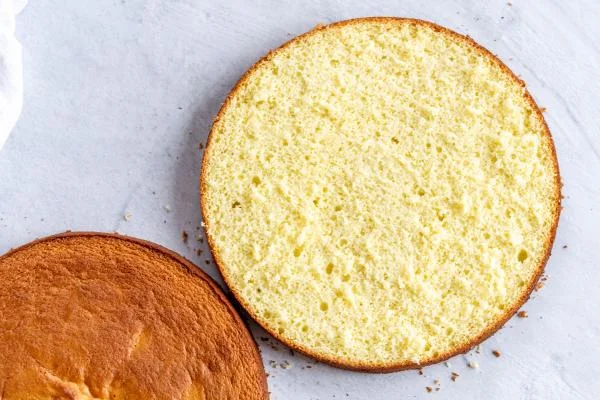Sponge cake is a timeless classic that forms the base of many desserts, from layered cakes to trifles. What makes a sponge cake stand out is its light, airy texture and subtle sweetness. However, achieving the perfect sponge cake can be tricky without the right technique. In this guide, we’ll show you how to bake a flawless sponge cake that’s fluffy, tender, and absolutely delicious.
Ingredients for the Perfect Sponge Cake:
- 4 large eggs (room temperature)
- 1 cup all-purpose flour
- 1 teaspoon baking powder
- 1/2 cup granulated sugar
- 1/4 cup melted unsalted butter (optional)
- 1/4 teaspoon vanilla extract (optional)
- A pinch of salt
Step-by-Step Instructions:
1. Prepare the Oven and Pans
Preheat your oven to 350°F (175°C). Grease and line the bottom of a round 8-inch cake pan with parchment paper, ensuring it is well-prepared for easy release after baking.
Tip: If you prefer, you can lightly dust the pan with flour to prevent the cake from sticking. If you’re making multiple layers, prepare the additional pans ahead of time.
2. Whisk the Eggs and Sugar
The key to a fluffy sponge cake is incorporating air into the batter. Start by placing the eggs and sugar in a large mixing bowl. Using an electric mixer or hand whisk, beat them on high speed until the mixture turns pale and doubles in volume. This process, called “aerating,” is crucial for the light texture of the cake.
Tip: It can take up to 8-10 minutes for the eggs and sugar to fully aerate. Be patient, as this step helps give the sponge its signature fluffiness.
3. Sift the Dry Ingredients
Sifting the flour, baking powder, and salt together ensures an even distribution of the ingredients, which helps prevent clumps in the batter. Sift these dry ingredients at least twice before adding them to the egg mixture.
Tip: If you want a super soft texture, you can sift the dry ingredients directly over the egg-sugar mixture, gently folding them in as you go.
4. Fold in the Dry Ingredients
Once the eggs and sugar mixture is light and fluffy, it’s time to add the dry ingredients. Using a spatula, gently fold the sifted flour mixture into the egg mixture. Do this slowly and carefully to avoid deflating the batter. The goal is to keep as much air in the mixture as possible, so avoid vigorous stirring.
Tip: Use the “cut and fold” technique to gently incorporate the flour. Run your spatula around the sides of the bowl, cutting through the mixture, and then fold it back toward the center.

5. Add Butter and Vanilla (Optional)
If you’d like a slightly richer flavor and a softer crumb, you can fold in the melted butter and vanilla extract. These additions will give the cake a buttery taste without compromising the airy texture.
Tip: Make sure the butter is slightly cooled before adding it to the batter. Hot butter can cause the batter to collapse.
6. Bake the Cake
Pour the batter into your prepared cake pan, spreading it evenly with a spatula. Tap the pan gently on the counter to release any air bubbles. Bake in the preheated oven for 25-30 minutes, or until the cake is golden brown and a toothpick inserted into the center comes out clean.
Tip: Avoid opening the oven door during the first 15 minutes of baking to prevent the cake from sinking. If you’re unsure whether the cake is done, gently press the top of the cake—it should spring back when touched.
7. Cool and Release from the Pan
Once baked, remove the sponge cake from the oven and allow it to cool in the pan for 10 minutes. Then, turn the cake out onto a wire rack to cool completely. This helps prevent the cake from becoming soggy.
Tip: If you lined the pan with parchment paper, carefully peel the paper off after cooling. If you didn’t line it, run a butter knife along the edges to loosen the cake before flipping it out.
Tips for the Perfect Sponge Cake:
- Room Temperature Ingredients: Make sure your eggs are at room temperature before using them. This helps them whip up better and results in a lighter, fluffier cake.
- Don’t Overmix the Batter: Once the dry ingredients are added, mix only until incorporated. Overmixing will cause the batter to lose air, leading to a dense cake.
- Proper Cooling: Allow your sponge cake to cool completely before frosting or slicing to avoid it becoming soggy or losing its structure.
Conclusion
Making the perfect sponge cake is all about patience and precision. By following these simple steps and tips, you’ll be able to bake a light, fluffy sponge cake every time. Whether you’re layering it with fruit, frosting it for a special occasion, or enjoying it as is, your sponge cake will be a hit!

